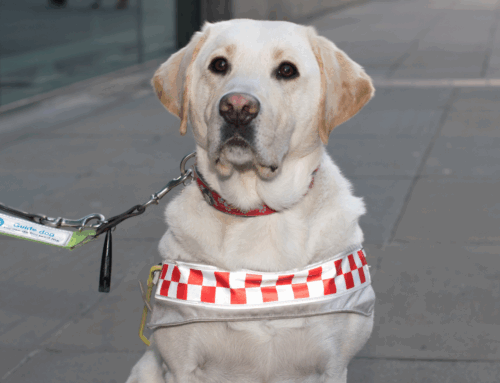There are lots of different conditions that come under the neurodiversity umbrella. Some of these can include autism, attention deficit hyperactive disorder (ADHD), Tourette’s syndrome, dyspraxia, dyslexia, dysgraphia and dyscalculia.
Dyslexia, dyspraxia, dysgraphia and dyscalculia may sound similar to each other but they are completely separate conditions.
A person may have more than one condition such as ADHD, dyslexia or autism. All neurodivergent conditions may have an effect in the workplace in very different ways, often making it difficult for people to do certain tasks. The best way to know how to support someone is to ask, don’t assume what their access needs are and what you can do to help.
Here is a quick breakdown of each and a top tip for helping someone in your team or workplace with these conditions.
Dysgraphia
What is it? Dysgraphia is a condition that affects the ability to produce writing.
What traits are associated with it? Dysgraphia may mean difficulties with spelling or writing thoughts down on paper. Some people often find it challenging to change language sounds to writing or accidentally omit words or put them in the wrong order. Dysgraphia can affect the fine motor skills necessary for writing such as pencil grip or forming letters correctly which can result in poor handwriting.
Top tip for support: People with dysgraphia may find it easier to articulate themselves verbally rather than in writing. A reasonable adjustment could be to include voice-to-text software or convert, where possible, any written tasks to verbal ones or allow voice notes in communications internally.
Dyscalculia
What is it? Dyscalculia is a condition that causes persistent difficulty in understanding numbers which can lead to problems understanding and doing mathematics.
What traits are associated with it? Dyscalculia may mean someone struggles with number-based information or math. This may also mean that someone experiences anxiety, anger, agitation, fear or physical symptoms such as sweating when in a situation where they may need to do math.
Top tip for support: Introduce software that can help with numbers such as downloading Equatio or Calcularis. Allow someone to use a calculator or assign tasks that are not math-based.
Dyspraxia
What is it? Dyspraxia is a condition that can affect motor coordination such as the way the body organises and carries out movement-related activities.
What traits are associated with it? Someone with dyspraxia may find they are clumsy and have difficulty with writing or doing up buttons or shoelaces. They may struggle with running and jumping, often bumping into people. They may also find it difficult to learn new skills, and sequences or do tasks that involve their balance.
Top tip for support: There are lots of things you can do to support dyspraxic people in the workplace – just ask! Giving clear, slower or written instructions can help when assigning new tasks.
Dyslexia
What is it? Dyslexia is a condition that can cause difficulties with reading, spelling, writing and how people process information, text and language.
What traits are associated with it? Dyslexia, similar to the other neurodivergent conditions, can present differently in people but there are common traits such as difficulties with literary skills and information processing. It may also impact a person’s organisations skills and they may struggle with timekeeping.
Top tip for support: Why not consider changing internal communication methods? This could be information on different coloured paper, or in a larger font, or making it accessible as an audio file.
Learn more about dyslexia by downloading our free resource
Interested in disability awareness training that includes neurodiversity? Why not visit our training information to see what options are available?



